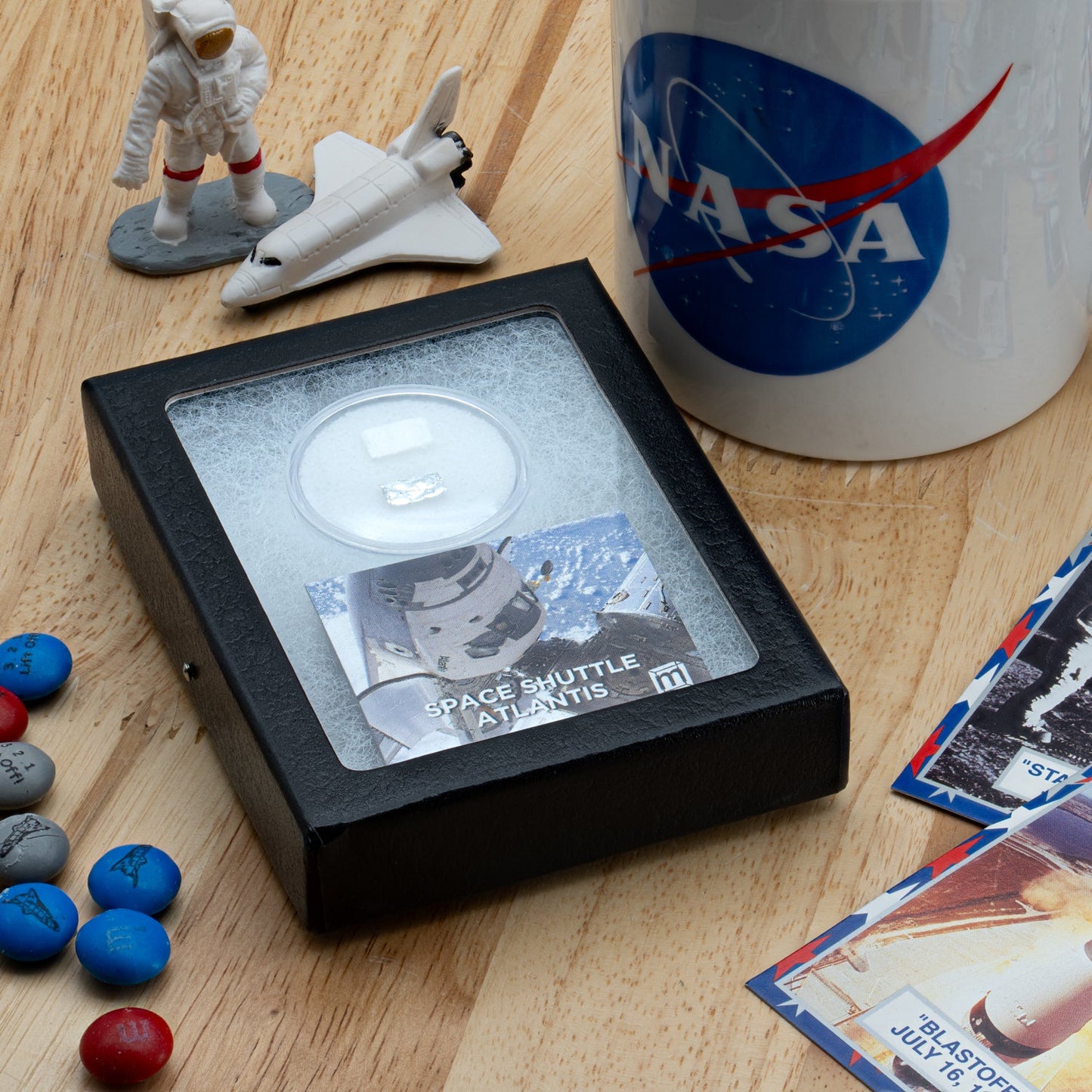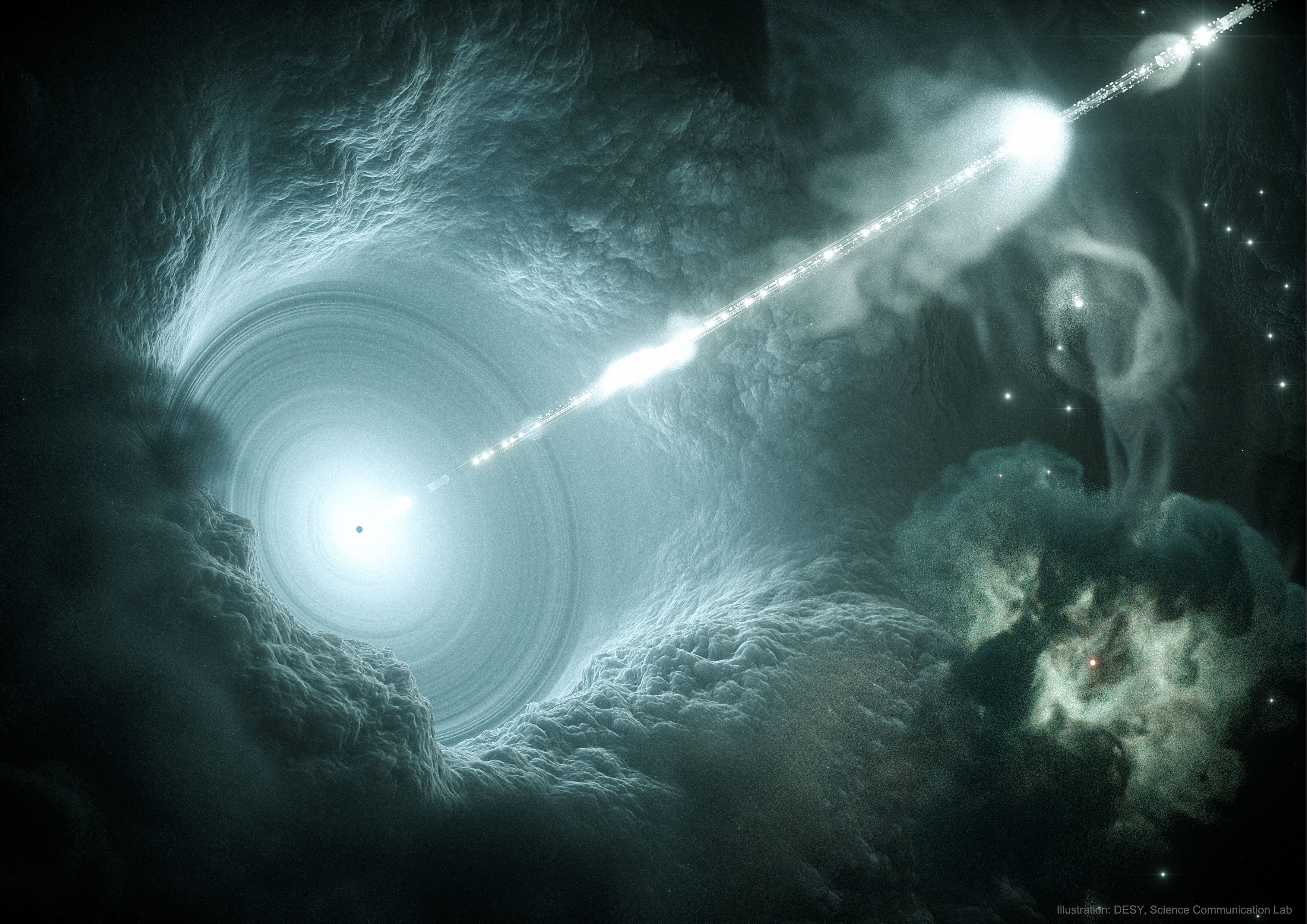Space Shuttle Atlantis - Flown Thermal Blanket
Space Shuttle Atlantis - Flown Thermal Blanket
Matter Subscriber Price:
Couldn't load pickup availability

Above: Front of the Specimen Card
The Space Shuttle Atlantis (OV-104) was the fourth of the five space shuttles used in space operations. It was also the final shuttle to be flown. During Atlantis' tenure, the craft was instrumental in sending planetary probes to Venus and Jupiter and adding modules to the ISS.
This specimen is a piece of a mission-flown insulation blanket, which was part of Atlantis' Thermal Control System. The TCS helped the ship withstand the extreme increase in temperatures during atmospheric reentry and the TCS blanket was applied to the inside of the shuttle to protect internal components and systems.
Softgoods such as the blanket were a simple and efficient way to provide lightweight insulation to delicate items. NASA disposition paperwork received with this item indicates this particular blanket was removed after Atlantis' mission to MIR (STS-86) which flew on September 26, 1997.
As pictured below, each hand-cut specimen is housed in an acrylic jar and ships in a classic, glass-topped riker display case. The specimens measure roughly 1x1cm though variations may occur. A small information card is also included, which serves as the certificate of authenticity.
Special Handling Notice: It's very important to note that this was a multi-layer insulation blanket so we've elected to provide multiple layers with each specimen. All specimens will have a layer of aluminized Kapton foil and a layer of fibrous bulk material. It's also possible that there may be a fragment of the Dacron net separator, but we've tried to remove that as it is quite brittle. In any case, if you choose to open the specimen jar, take great care. The Kapton is very light and slightly brittle with age and use. It may fly away or even break into smaller pieces.
More about Space Shuttle Program and Atlantis (OV-104)
After the close of the Apollo program, NASA turned its focus from lunar landings to research and observation. The vessel for this new focus would be the Space Shuttle, a multi-use vehicle designed to carry astronauts and scientific equipment to and from Earth's orbit. Due to their reusable design, the orbiters were amazing tools for furthering our scientific understanding of the stars.
NASA's Space Shuttle program delivered 133 successful missions during its three decades in operation, beginning with Columbia's inaugural launch in 1981 and concluding with Atlantis' final flight in 2011. Missions involved many vital tasks, such as maintaining the International Space Station, repairing the Hubble Space Telescope, and deploying satellites. Scientific experiments featured heavily in the rotation, using the reusable Spacelab developed by the ESA.
As noted above, the Space Shuttle Atlantis was the fourth of the five space shuttles used in space operations. It was also the final shuttle to be flown. Atlantis orbited Earth 4,848 times, traveling approximately 126 million miles, and carried 156 different passengers over its time in service. During Atlantis' tenure, the craft was instrumental in sending planetary probes to Venus and Jupiter and adding modules to the ISS.
Atlantis weighed about 150,000 pounds (68,000 kg), boasting a wingspan of about 80 feet and a length of about 120 feet. While in space, Atlantis orbited Earth 4,848 times, traveling approximately 126 million miles, carrying 156 different passengers. Today, you can find the Atlantis at the Kennedy Space Center Visitor Complex on Merritt Island, Florida, where it's on public display.
Further Reading
Mullane, Mike. Riding rockets: the outrageous tales of a space shuttle astronaut. Simon and Schuster, 2007.
Lamoreux, James C., James D. Siekierski, and JP Nick Carter. "Space Shuttle thermal protection system inspection by 3D imaging laser radar." Laser Radar Technology and Applications IX. Vol. 5412. SPIE, 2004.
PITTS, W., and D. KOURTIDES. "Ceramic insulation/multifoil composite for thermal protection of reentry spacecraft." 24th Thermophysics Conference. 1989.
Linton, Roger C., Ann F. Whitaker, and Miria M. Finckenor. "Space environment durability of beta cloth in LDEF thermal blankets." LDEF Materials Results for Spacecraft Applications (1993).
Harris, Richard, Michael Stewart, and William Koenig. "Thermal Protection Systems Technology Transfer from Apollo and Space Shuttle to the Orion Program." 2018 AIAA SPACE and Astronautics Forum and Exposition. 2018.
Jenkins, Dennis R. Space shuttle: the history of the National Space Transportation System: the first 100 missions. DR Jenkins, 2001.
Jenkins, Dennis R. Space Shuttle: Developing an Icon: 1972-2013. Specialty Press, 2016.

Above: Back of the Specimen Card



Shop collections containing this item:
Aeronautics Engineering Historic Artifacts In Stock Mini Museum Outer Space Space Flight Artifacts Storewide

AUTHENTICITY GUARANTEED
We only list 100% verified authentic items. We work with reputable collectors, and regularly consult with our network of scientists and experts.
-
Free Shipping
Spend $50 to qualify for free US shipping
-
Secure Payments
Pay how you like: Credit card, PayPal, After Pay, Shop Pay, Venmo, Apple/Google/Meta Pay & crypto
-
Simple Returns
Change your mind? No problem. Enjoy easy returns within 30 days.
WE TAKE SCIENCE SERIOUSLY
You deserve better than craft store science products. And we think learning is more impactful when you're holding a tangible piece of what you're learning about. That's why Stemcell exists.
We're dedicated to providing the best scientific products available—whether they're fragments of scientific importance, experimental activities, or just interesting things that scratch your curiosity itch.
With every new product launch, our list of new ideas gets longer rather than shorter. So check in often for our latest projects, and thanks for being a part of our endeavor to make the world a smarter place to live.
Believe in yourself; for everything else, there's science.
— TERRY MUDGE, FOUNDER & SCIENTIFIC DIRECTOR


